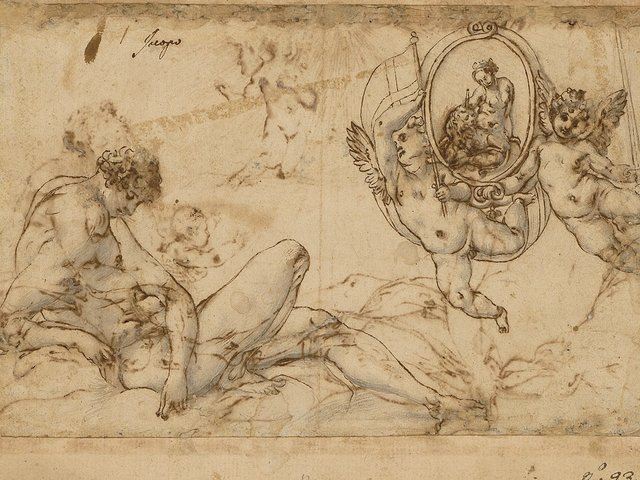Despite the fact that the supply of notable Old Master drawings has greatly diminished over the past two decades, the market remains lively, stoked both by the increased determination of the trade to find unrecognised examples and the blissful ignorance of auction houses, which frequently reward dealers with miscatalogued gems. The fruits of this potent combination are on view at two exceptionally strong dealer exhibitions opening in New York this month.
While the old Colnaghi gallery on East 67th Street remains shuttered and forlorn, Luca Baroni and Stephen Ongpin of Colnaghi, London have returned to New York, opening their annual drawings exhibition (6-23 May) in the decidedly plusher locale uptown of Otto Naumann at 22 East 80th St, which has fast become one of the more popular venues for visiting dealers.
Baroni & Co. are old hands at seeking out previously unknown Italian drawings, and as expected, several prime examples are featured, led by six remarkable, large, pen and brown wash sheets by Jacopo Ligozzi. Depicting pilgrimage sites en route to La Verna where St Francis received the stigmata, and engraved for a pilgrim’s guidebook of 1612, only three sheets were previously known (at the Met, Louvre and Lugt Collection). Colnaghi’s group includes several poetic roadside vistas, one of which seems prescient of Thomas Hones in its willy-nilly stacking of rooftops and windows. Further Italian discoveries are a rare Pietro da Cortona landscape drawing in pen and grey ink and wash similar to the example formerly in the Leicester collection at Holkham Hall; a large red chalk figure of Fortune by Mattia Preti (a fine example from an artist whose drawings are unusually scarce) and a black chalk Guercino depicting a procuress plying her trade. Of the northern drawings, a large pen and ink modello (indented for transfer) by Joseph Heinz for “The fall of Phaeton” is a masterpiece of the Prague School, a study for the large panel in Leipzig painted for Rudolph II. Sharing Heinz’s spirit of elegant catastrophe are two late nineteenth-century grisaille and gold ovals by Luc-Olivier Merson of Orpheus stretching his arm out for Euridice, who falls limply and gracefully backwards into Hell: Rudolph would have loved them.
Mark Brady, joining forces with Katrin Bellinger, should offer Colnaghi formidable competition with their master drawings show at Brady’s gallery at 3 East 76th St , 8-30 May. Among the nearly forty drawings are rediscoveries, led by a rare pen and wash study by the sixteenth-century Flemish master Bernard van Orley of a stag hunt, preparatory for “The hunts of Maximilian” tapestries in the Louvre. Immediately recognised as among van Orley’s greatest achievements, both cartoons and tapestries were cited by Karel van Mander in his biography of the artist in his Het Schilder-Boek of 1604.
A welcome addition to the artist’s œuvre (with the two studies for the “Nassau genealogy” sold at Sotheby’s in 1995), it is one of six drawings known for the Maximilian series, the others divided between Leyden, Berlin, Budapest and Copenhagen. Additional discoveries include an unusually sensitive oil on paper study by Giovanni Benedetto Castiglione of the Madonna and Child with putti (a preparatory drawing is at Windsor) and two highly finished sheets by Girodet for Racine’s Phèdre.
Among the more dramatic sheets are a pen “Promenading couple” by the sixteenth-century Swiss artist Christophe Mürer, liberally heightened with white on dark grey paper, a grisaille St Jerome by Palma Giovane, an irresistible brown pen and wash study of a pudgy squirrel by Giovanni da Udine formerly at Holkham (which could serve as a model for a future Beanie Baby) and a remarkable pen and wash depiction by Jean-Baptiste-Marie Pierre of Jesuit decapitation before an Oriental ruler rendered incongruously lighthearted in a quaint chinoiserie landscape.
Originally appeared in The Art Newspaper as 'Two fine displays of Old Master drawings'



